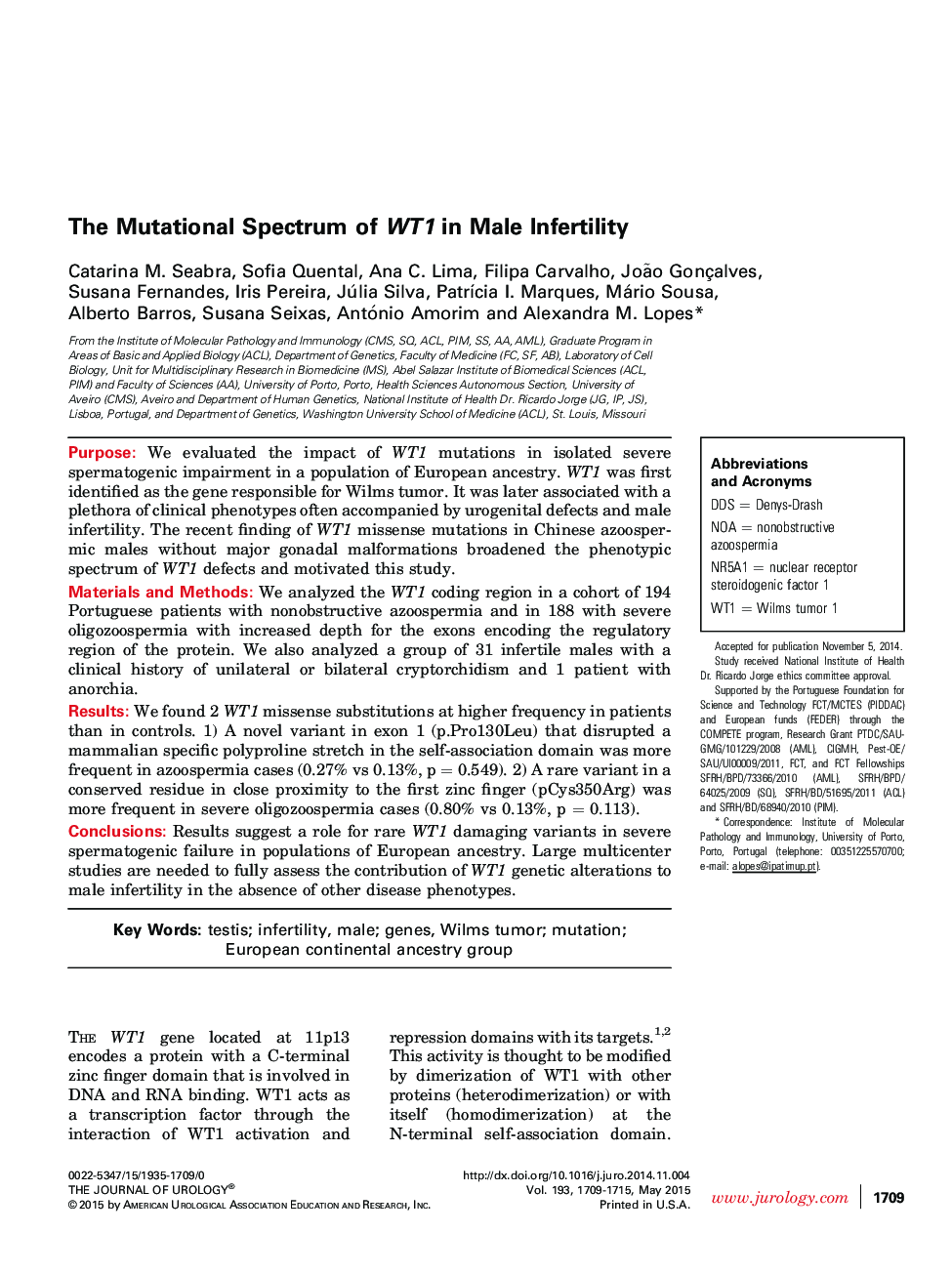| Article ID | Journal | Published Year | Pages | File Type |
|---|---|---|---|---|
| 3858723 | The Journal of Urology | 2015 | 7 Pages |
PurposeWe evaluated the impact of WT1 mutations in isolated severe spermatogenic impairment in a population of European ancestry. WT1 was first identified as the gene responsible for Wilms tumor. It was later associated with a plethora of clinical phenotypes often accompanied by urogenital defects and male infertility. The recent finding of WT1 missense mutations in Chinese azoospermic males without major gonadal malformations broadened the phenotypic spectrum of WT1 defects and motivated this study.Materials and MethodsWe analyzed the WT1 coding region in a cohort of 194 Portuguese patients with nonobstructive azoospermia and in 188 with severe oligozoospermia with increased depth for the exons encoding the regulatory region of the protein. We also analyzed a group of 31 infertile males with a clinical history of unilateral or bilateral cryptorchidism and 1 patient with anorchia.ResultsWe found 2 WT1 missense substitutions at higher frequency in patients than in controls. 1) A novel variant in exon 1 (p.Pro130Leu) that disrupted a mammalian specific polyproline stretch in the self-association domain was more frequent in azoospermia cases (0.27% vs 0.13%, p = 0.549). 2) A rare variant in a conserved residue in close proximity to the first zinc finger (pCys350Arg) was more frequent in severe oligozoospermia cases (0.80% vs 0.13%, p = 0.113).ConclusionsResults suggest a role for rare WT1 damaging variants in severe spermatogenic failure in populations of European ancestry. Large multicenter studies are needed to fully assess the contribution of WT1 genetic alterations to male infertility in the absence of other disease phenotypes.
